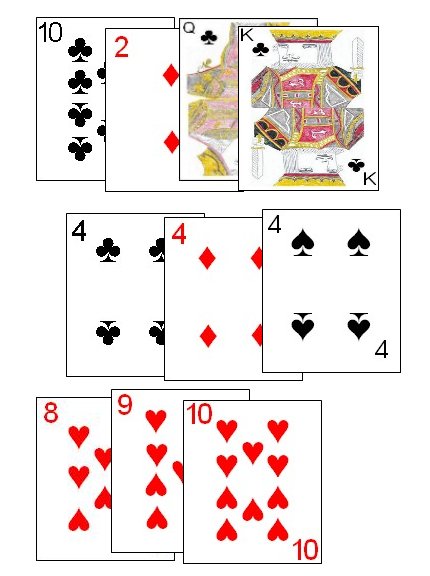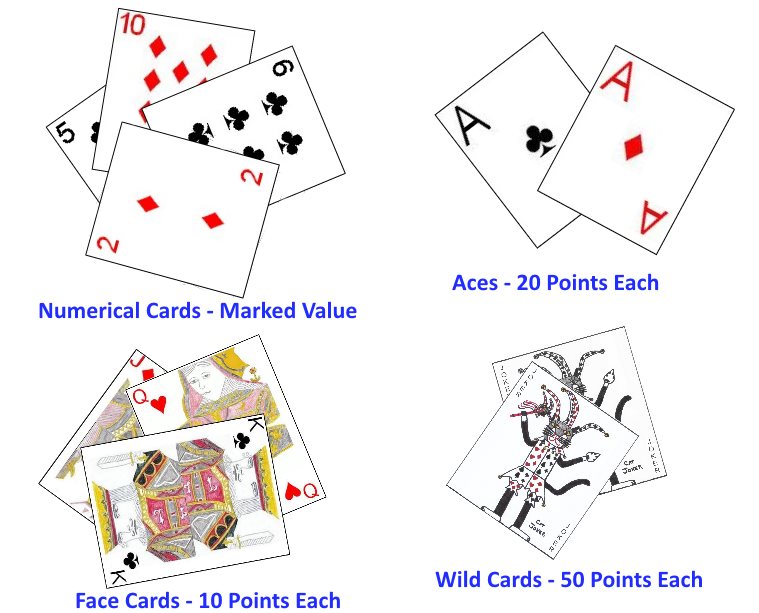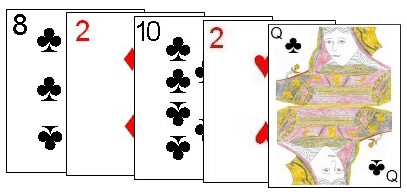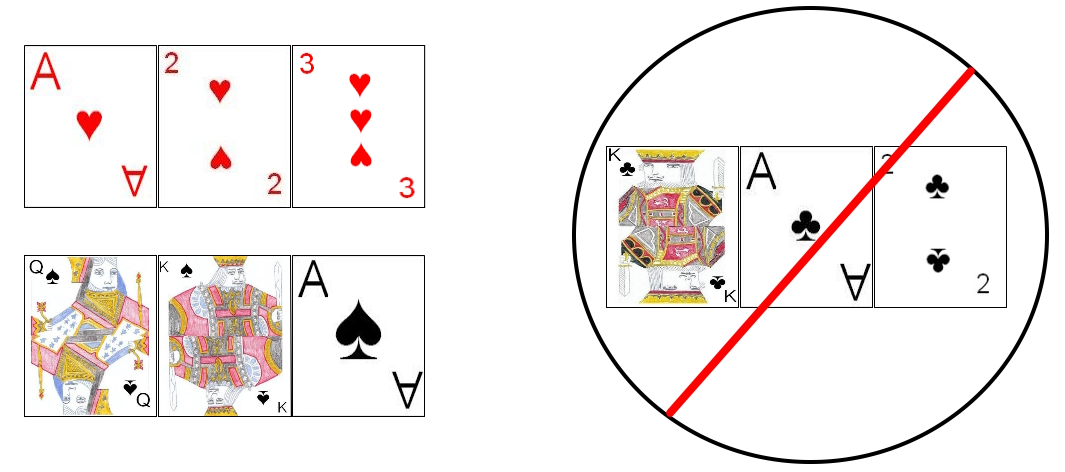| Round | Cards Dealt to Each Player | Wild Cards |
|---|---|---|
| 1 | 3 | Jokers, Twos and Threes |
| 2 | 4 | Jokers, Twos and Fours |
| 3 | 5 | Jokers, Twos and Fives |
| 4 | 6 | Jokers, Twos and Sixes |
| 5 | 7 | Jokers, Twos and Sevens |
| 6 | 8 | Jokers, Twos and Eights |
| 7 | 9 | Jokers, Twos and Nines |
| 8 | 10 | Jokers, Twos and Tens |
| 9 | 11 | Jokers, Twos and Jacks |
| 10 | 12 | Jokers, Twos and Queens |
| 11 | 13 | Jokers, Twos and Kings |

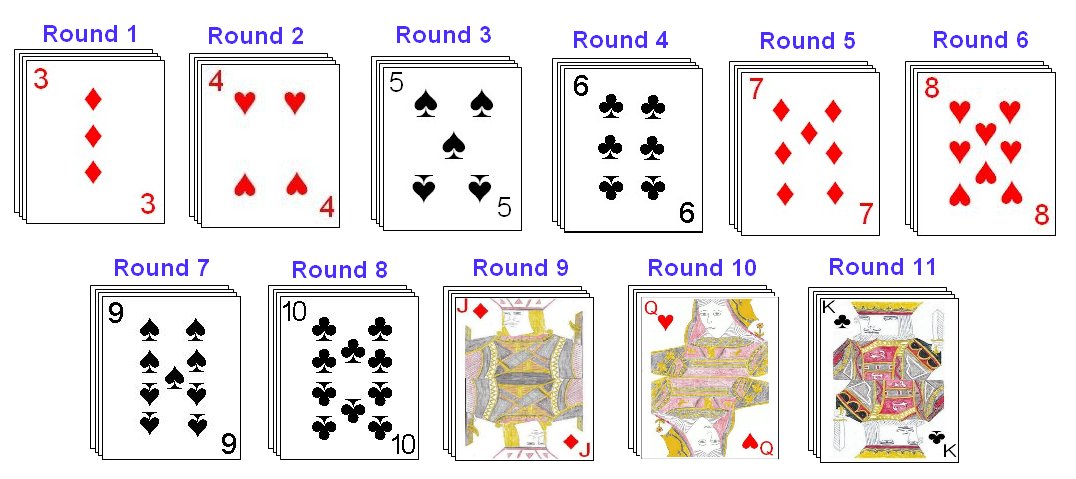 Wild cards can be used to substitute any other card (including a card of it's own denomination). There are a few stipulations on the use of wild cards, however; A meld may never contain more wild cards than natural (non-wild) cards, and in any run, two wild cards may not be used directly in sequence.
Wild cards can be used to substitute any other card (including a card of it's own denomination). There are a few stipulations on the use of wild cards, however; A meld may never contain more wild cards than natural (non-wild) cards, and in any run, two wild cards may not be used directly in sequence.
